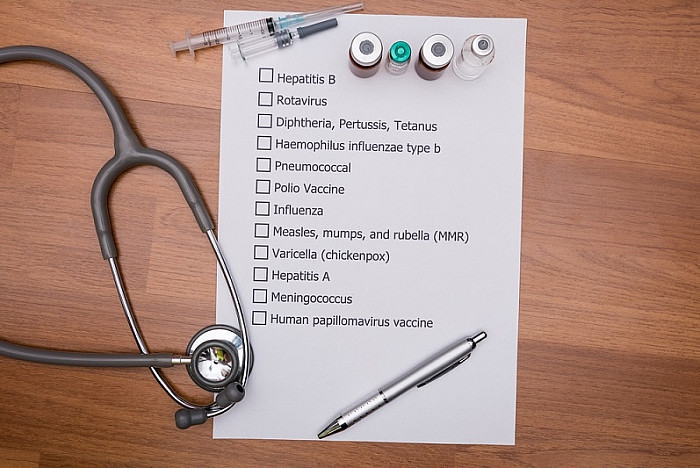
Importance of Following a Childhood Immunization Schedule
Every parent remembers that tiny moment. The nurse walks in with a small tray, a baby looks up, curious but calm. The doctor smiles and says, "It's time for the vaccines." The childhood immunization schedule might look complicated, but it's really just a plan - a timeline made to keep children safe. From the first 2 month shots to the boosters given at school age, each vaccine plays its part. Here's how it all fits together, simply explained.
Understanding the Childhood Vaccination Schedule
The childhood immunization schedule is a carefully made plan. It shows when each vaccine should be given, starting right from birth. The goal is simple - protect children from diseases that can make them seriously sick.
Doctors around the world agree on this schedule because it works. Babies are born with some protection from their mothers, but that fades over time. Vaccines step in to take over. Each one teaches the body how to fight a disease without actually getting sick.
The childhood vaccination schedule may change a little depending on the country or medical updates. But the pattern is mostly the same. Early vaccines guard against illnesses like polio, diphtheria, whooping cough, and more. Later ones protect against measles and chickenpox. It's like building an invisible armor - piece by piece - as the child grows.
Vaccine Schedule for Children by Age
Let's walk through what the schedule looks like, step by step.
Vaccines at 2 Months
This is when it really begins. The 2 month shots are usually the first major vaccines after birth. Babies might cry for a few seconds, but they soon forget. These vaccines are the start of a lifetime of protection.
At two months, a baby usually receives the following essential vaccines:
- Hepatitis B (second dose): Helps protect the liver from infection.
- Rotavirus (first dose): Prevents diarrhea that can lead to dehydration.
- DTaP (first dose): Guards against diphtheria, tetanus, and whooping cough.
- Hib (first dose): Prevents meningitis and other infections.
- PCV (first dose): Protects from pneumonia.
- Polio (first dose): Stops the virus that causes paralysis.
Parents often feel nervous, but these early vaccines build strong protection when it's needed the most.
Vaccines at 4 Months
At four months, babies come back for their second round. It's called a booster - a reminder for the immune system.
These vaccines at 4 months include:
- Rotavirus (second dose)
- DTaP (second dose)
- Hib (second dose)
- PCV (second dose)
- Polio (second dose)
Each shot strengthens the protection started at two months. Think of it like practicing for a game - the more the body trains, the stronger it gets.
6 Month Vaccines
By now, the baby's immune system is getting smarter. The 6 month vaccines continue the pattern:
- Hepatitis B (third dose)
- DTaP (third dose)
- Hib (third dose) (if needed)
- PCV (third dose)
- Polio (third dose)
- Rotavirus (third dose) (if part of a three-dose series)
- Flu vaccine: Can be given every year from this point.
- COVID-19 vaccine: Can start from six months, if recommended by a doctor.
The flu vaccine becomes a regular visitor from here on. It helps during cold months when flu spreads easily.
12 to 18 Month Vaccines
The 12 month vaccines mark a big step. Babies are now walking, exploring, touching everything. This is when their world opens up - and so do new risks.
The vaccines during this stage are:
- MMR (measles, mumps, rubella): First dose.
- Hepatitis A: First dose.
- Varicella (chickenpox): First dose.
- DTaP: Fourth dose.
- Hib: Final dose.
- PCV: Fourth dose.
These protect against diseases that spread quickly among children. Every visit, every shot, adds one more layer of safety.
Toddler Vaccination Schedule (18 Months to 6 Years)

The toddler vaccination schedule covers final doses and boosters. These keep the protection active through preschool and kindergarten.
Here's what's usually given:
- Hepatitis A: Second dose.
- DTaP: Fifth dose at 4-6 years.
- Polio: Fourth dose at 4-6 years.
- MMR: Second dose at 4-6 years.
- Varicella: Second dose at 4-6 years.
By this time, the child's body has a strong defense. These boosters keep that memory alive - ready for whatever germs come their way.
Vaccines for Preteens (11-16 Years)
Even as kids grow, vaccines stay important. The immune system changes, and new risks appear.
At this stage, they receive:
- Tdap: A booster for tetanus, diphtheria, and whooping cough.
- HPV: Helps prevent certain infections later in life.
- Meningococcal (MenACWY): Protects against meningitis.
A second meningococcal dose comes at 16. These vaccines prepare children for teenage years, school, and beyond.
Common Vaccine Side Effects in Babies
Some parents worry about vaccine side effects in babies, but most are mild. A small fever. A sore arm. Maybe a bit of fussiness. That's the body showing it's doing its job.
Common effects include the following things:
- Redness or swelling where the shot was given.
- Mild fever.
- Sleepiness or crying.
- Temporary loss of appetite.
These usually go away in a day or two. Severe reactions are very rare, but doctors always keep an eye on every vaccine given.
Must Read: Lip Tie in Babies: What It Is, Signs, and Symptoms
Reasons to Follow the Childhood Immunization Schedule
You can check the following list to find out the three reasons to follow an immunization schedule:
1. Protection Starts Early
Babies are more at risk in their first few years. Following the schedule ensures they are safe during that time when their immune system is still learning.
2. It Protects the Whole Community
When most children are vaccinated, diseases find it hard to spread. This keeps even unvaccinated babies - or those who can't get shots - safe.
3. It Builds Lifelong Health
The full vaccine schedule for children prevents illnesses that can cause serious long-term harm. These shots don't just protect for a few months - they last a lifetime.
What Happens If a Vaccine Is Delayed?
Sometimes, things don't go as planned. Maybe a child was sick, or a family moved. Missing a vaccine can happen. But it's easy to fix. Doctors can create a catch-up schedule so every dose is given safely, just at a later time.
Still, it's best not to delay too long. The longer a gap, the higher the risk of illness. Keeping a record, checking it during every visit - that helps parents stay on track.
Three Tips for Parents to Stay on Track
1. Keep the Vaccine Card Updated
It sounds simple, but that little card is a big deal. It's a reminder of every shot taken and what's next.
2. Don't Skip Regular Checkups
Most vaccines happen during doctor visits. Skipping them makes it easy to fall behind. Even if everything seems fine, those visits matter.
3. Ask Questions Freely
Parents sometimes hesitate to ask questions. But they shouldn't. Knowing what each vaccine does helps them feel confident in every choice they make.
Conclusion
The childhood immunization schedule is more than a checklist. It's a journey that begins in a tiny doctor's room and lasts a lifetime. Every vaccine given today protects tomorrow. By following the schedule, parents build a quiet, lasting shield of health around the ones they love most.

